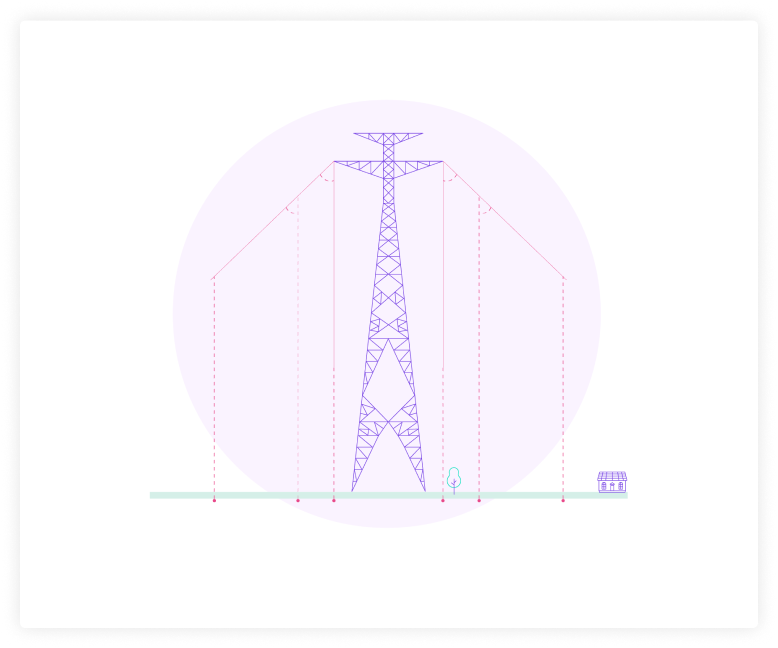Let’s talk about…
Home / Territories / Let’s talk about…
Transmission lines
Energy in Chile is transported from generation sources to consumption centers through high-voltage transmission lines. There it is received by substations, where it is converted to low voltage for its end-user distribution.
As required by current national regulations, all transmission line projects must establish a safety strip to ensure that there are no safety risks to both people and the facilities that make up the line.
- Thanks to HVDC technology, the required fringe is smaller than for the set of alternating current lines that would transmit the same amount of power.
- To transport the same amount of power, alternating current lines would require a strip of about 120 meters wide. In the case of the Kimal – Lo Aguirre direct current line, it requires a minimum width of 77 meters. This width includes the entire strip, from end to end.
* The width of the safety strip will vary according to the conditions of the span to be analyzed, such as height above mean sea level (AMSL) and separation between structures.
Decarbonize
In Chile we are amidst an Energy Transition, incorporating more and more renewable energies and strengthening transmission systems, with more investments and new clean energy projects. The National Electric Coordinator (public agency) expressed the need to transmit the renewable energy currently being generated in the north of the country to energy consumption centers so to ensure an efficient supply and also for replacing the energy produced by fossil fuels (coal, oil, and gas), contributing to the decarbonization of our matrix by introducing clean energy.
Magnetic fields

A magnetic field is a force field created as a result of the movement of electric charges (flow of electricity). The flux decreases with the distance from the source causing the field.
Therefore, when defining the route of a transmission line, compliance with electromagnetic phenomena (electric and magnetic field, audible noise, radio interference) must be guaranteed, forbidding any building or human settlement within the safety strip.
Likewise, the Ministry of Health, which participates in the Environmental Impact Assessment System, has generated guidelines to carry out studies to rule out health impacts, such as noise, emissions, and electromagnetic fields, which must be included in the project design.
Direct current
Direct current refers to the continuous flow of electric charge through a conductor between two points of different potential and electric charge. It is the electric current that flows steadily in one direction, such as that flowing in a flashlight or any other battery-operated device.
The use of this current in a transmission line has economic, social, and environmental advantages.
- No need for intermediate substations.
- Lower energy losses.
- Quick power flow control.
- It helps to reduce Alternating Current system oscillations (which up to now is the only electric current used in Chile).
- Smaller security fringe.
- Less impact on the territory because fewer structures and conductors are needed.
The longer the distance of the transmission line, the lower the investment cost. Therefore, this first direct current line will be the longest in Chile to date.
The longer the transmission distance (km), the lower the energy losses (MW) of HVDC technology.